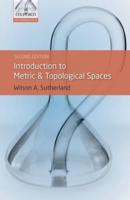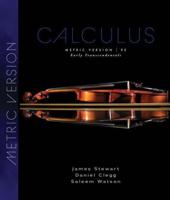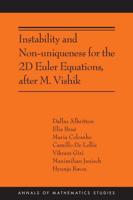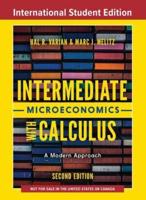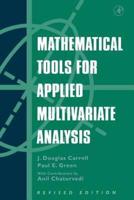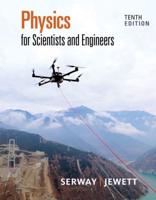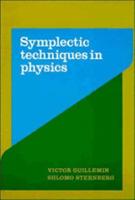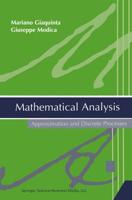Publisher's Synopsis
MATHEMATICAL ANALYSISMathematical Analysis2 Concept of Function 2.1 Expressing a function. . . . . . . . . . . . . . . . . . . . . . . 2.1.1 Expression by formula. . . . . . . . . . . . . . . . 2.1.2 Expression by graph. . . . . . . . . . . . . . . . 3 Composition of Functions 3.1 Translations. . . . . . . . . . . . . . . . . . . . . . . . . . . . . . 3.1.1 Example: need for translation. . . . . . . . . . . . . . 3.1.2 Translation methods. . . . . . . . . . . . . . . . . . . 3.1.3 Graphical use of translations. . . . . . . . . . . . . . . . . Dilations. . . . . . . . . . . . . . . . . . . . . 3.23.3 . . . . . . . . . 3.2.1 Example: need for expansion. . . . . . . . . . . . . . 3.2.2 Method of expansion. . . . . . . . . . . . . . . . . . . General case. . . . . . . . . . . . . . . . . . . . . . . . . . . . . 3.3.1 General case example. . . . . . . . . . . . . . . . . . 3.3.2 Other information on the composition of functions. . . . . 10 4 Inverse functions 4.1 Injective, surjective and bijective functions. . . . . . . . . . . . . . . 4.1.1 Identification of an injective function. . . . . . . . . . Meaning of inversion. . . . . . . . . . . . 4.24.3 . . . . . . . . . . . 4.2.1 Example: need for inversion. . . . . . . . . . . . . . 4.2.2 Properties of inversion. . . . . . . . . . . . . . . . . . . Inversion mode. . . . . . . . . . . . . . . . . . . . . . . . 5 Exponential function5.1 General information on the exponential function . . . . . . . . . . . . . . . 5.1.1 to x for x ∈ No. . . . . . . . . .. . . . . . . . . . . . . . .5.1.2 to x for x ∈ Z. . . . . . . . . .. . . . . . . . . . . . . . .5.1.3 to x for x ∈ Q. . . . . . . . . .. . . . . . . . . . . . . . .5.1.4 to x for x ∈ R. . . . . . . . . .. . . . . . . . . . . . . . .5.2Inverse function: the logarithm. . . . .. . . . . . . . . . . . . . .5.2.1 The number of Napier. . . . . .. . . . . . . . . . . . . . . 6 Limits 6.1 Concept of limit. . . . . . . . . . . . . . . . . . . . . . . . . . 6.1.1 Definition of limit. . . . . . . . . . . . . . . . . . . . . 6.1.2 Applications of the concept of limit. . . . . . . . . . . . . Calculation of limits. . . . . . . . . . . . 6.26.36.4 . . . . . . . . . . . . . . . 6.2.1 General rules. . . . . . . . . . . . . . . . . . . . . . . . Right limits and left limits. . . . . . . . . . . . . . . . . . . . . Infinite limits. . . . . . . . . . . . . . . . . . . . . . . . . . . . . 6.4.1 Left and right limits with different signs. . . . . . . . . . 7 Continuity to 7.1 Definition of continuity. . . . . . . . . . . . . . . . . . . . . . . 7.1.1 There is no limit. . . . . . . . . . . . . . . . . . . . . . 7.1.2 The limit lim x → to f (x) exists but is different from does) . . . . . 7.1.3 The limit exists but it is ∞. . . . . . . . . . . . . . . . . . . . 7.27.3 Special functions. . . . . . . . . . . . . . . . . . . . . . . . . . 7.2.1 Continuity of compound functions. . . . . . . . . . . . . . 7.2.2 Continuity of inverse functions. . . . . . . . . . . . . . . . Intermediate value theorem7.3.1 Remarks on the intermediate value theorem 8 Derivation 8.1 Concept of Derivative8.1.1 Definition8.1.2 Theoretical aspects8.1.3 Notations8.1.4 Definition of a derived function8.1.5 Some applications of the derivative The computation of a derivative8.2.1 Non-differentiable functions8.2.2 Rules of derivation Highs and lows8.3.1 Fermat's principle8.3.2 Weiestraß (or extreme values) theorem8.3.3 Lagrange (or mean value) theorem8.3.4 Application of minimums and maximums Concavity8.4.1 First theorem on convex functions8.4.2 Second theorem on convex functions8.4.3 Point of fl it

